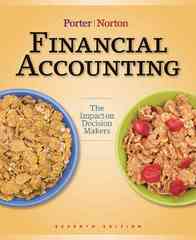Question
Paragraph 1 On January 1, 2011, Parent Company purchased 80% of the common stock of Subsidiary Company for $402,000. On this date Subsidiary had total
Paragraph 1 On January 1, 2011, Parent Company purchased 80% of the common stock of Subsidiary Company for $402,000. On this date Subsidiary had total owners equity of $440,000 ($100,000-$200,000-$140,000). Land was undervalued by $20,000, Equipment with a 5-year remaining life was undervalued by $15,000 and Inventory was undervalued by $15,000. Any other excess of cost over book value is due to goodwill. Parent accounts for its Investment in Subsidiary using the simple equity method. Paragraph 2 On January 1, 2013, Subsidiary issues $100,000 of 6% cumulative Preferred Stock. Parent purchases all of the preferred shares at the time of issuance for 102 and carries the Preferred Stock as an Investment. Preferred dividends for the year have been declared but not yet paid as of December 31, 2013. Paragraph 3 On January 1, 2013 Parent held merchandise acquired from Subsidiary for $50,000. During 2013 Subsidiary sold merchandise to Parent for $120,000, of which Parent holds $30,000 on December 31, 2013. Subsidiarys gross profit on sales is 40% for both years. On December 31, 2013 Parent still owes Subsidiary $5,000 for merchandise. Paragraph 4 On January 1, 2013 Subsidiary held merchandise acquired from Parent for $20,000. During 2013 Parent sold merchandise to Subsidiary for $40,000, of which Subsidiary holds $10,000 on December 31, 2013. Parents gross profit on sales is 40% for both years. On December 31, 2013 Subsidiary still owes Parent $3,000 for merchandise. Paragraph 5 On December 31, 2011, Parent issued $100,000 par value of 11%, 10-year bonds for $106,232 which resulted in an effective interest rate of 10%. The bonds pay interest semi-annually every June 30th and December 31st. Parent uses the effective-interest rate method of amortization of any premium or discount. An amortization table for 2012 and 2013: Date Carrying Value Cash Paid Expense Premium Amortized Premium Balance Carrying Value 12/31/11 $106,232 6/30/12 $ 5,500 $5,312 $188 $6,044 $106,044 12/31/12 $106,044 $ 5,500 $5,302 $198 $5,846 $105,846 6/30/13 $105,846 $ 5,500 $5,292 $208 $5,638 $105,638 12/31/13 $105,638 $5,500 $5,282 $218 $5,420 $105,420
On December 31, 2012, Subsidiary purchases half ($50,000) of the bonds paying par value. At the end of 2013, the Subsidiary still holds the bonds it purchased. Paragraph 6 On December 31, 2011, Parent sold equipment with a historical cost of $50,000 and accumulated depreciation of $30,000 to the Subsidiary for $40,000. Subsidiary began using the equipment on January 1, 2012, the equipment had an estimated useful life of eight years. Paragraph 7 On January 1, 2012 Parent purchased equipment for $194,110 and immediately leased the equipment to the Subsidiary on a 4-year lease. The equipment lease payments of $60,000 are to be made annually every January 1st beginning immediately, for a total of 4 payments. The implicit interest rate is 12%. The lease provides for an automatic transfer of title to the Sub at the end of the lease. The estimated useful life of the lease is 5 years. The lease has been capitalized by both companies. The lease amortization schedule is as follows: Date Payment Interest Gross Receivable Unearned Interest Carrying Value 1/1/12 0 0 $240,000 $35,890 $204,110 1/1/12 $60,000 0 $180,000 $35,890 $144,110 1/1/13 $60,000 $17,293 $120,000 $18,597 $101,403 1/1/14 $60,000 $12,168 $60,000 $6,429 $53,571 1/1/15 $60,000 $ 6,429 $ -0- $ -0- $ -0-
1. Prepare the distribution and distribution of excess schedule
2. Make all of the entries pertaining to eliminating the investment in sub's common stock
3. Make all of the entries pertaining to intercompany sales and inventories
4. Make all of the entries pertaining to intercompany accounts receivable and accounts payable
5. Make all of the entries pertaining to intercompany bonds and interest
6. Make all of the entries pertaining to intercompany sales of equipment
7. Make all of the entries pertaining to intercompany leases
8. Make all of the entries pertaining to intercompany preferred stock
9. From your worksheet, AFTER you have done all of the eliminations, prepare an income statement below and show all calculations.
10. Now show me your detailed calculations as to how the Consolidate Net Income will be allocated between NVI and the Controlling Interest. Feel free to write any comments and explanations regarding your calculations but clear so I know what you are doing and your thought process.
Step by Step Solution
There are 3 Steps involved in it
Step: 1

Get Instant Access to Expert-Tailored Solutions
See step-by-step solutions with expert insights and AI powered tools for academic success
Step: 2

Step: 3

Ace Your Homework with AI
Get the answers you need in no time with our AI-driven, step-by-step assistance
Get Started


